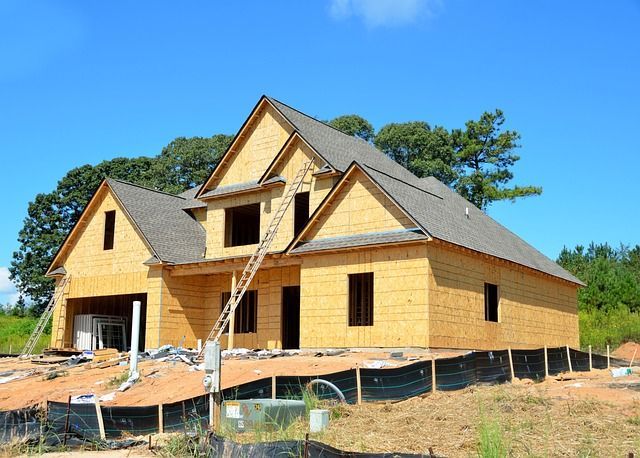or email bjoyce@grandcoastcapital.com

What Are Bridge Loans and How Can They Be Used for Property Investments

A bridge loan is a type of short-term financing that helps individuals or businesses “bridge” the gap between selling an existing property and purchasing a new one. Bridge loans are also known as swing loans or gap financing. In real estate, bridge loans are often used when buyers need to close on a new property quickly but haven’t yet sold their current property. While this type of financing can provide flexibility, it also comes with risks and costs that must be carefully evaluated. This article will explore how bridge loans work, their uses in property transactions, and the pros and cons of utilizing this financing option.
What are Bridge Loans?
Bridge loans are short-term loans, typically lasting between 6 to 12 months, designed to provide immediate cash flow for individuals or businesses. They are secured by collateral, often the borrower’s current property, and intended to be repaid when the borrower sells their property or secures more permanent financing, such as a traditional mortgage. These loans are commonly used by homeowners looking to purchase a new property before their existing home is sold.
In the real estate context, bridge loans allow borrowers to take advantage of a time-sensitive opportunity, such as a favorable purchase price or an ideal location, without waiting for their current home sale to close. Lenders usually offer bridge loans up to 80% of the combined value of the two properties (the one being sold and the one being purchased).
How to Use a Bridge Loan for Property Investment
Bridge loans are especially useful in the following real estate scenarios:
- Fix-and-Flip Projects:
Investors who purchase homes to renovate and resell (fix-and-flip) may use bridge loans to finance a property's purchase and renovation. Because bridge loans are quick to obtain, they are often the preferred financing method for time-sensitive investment projects where speed is crucial. - Commercial Real Estate Deals:
In the commercial real estate world, bridge loans are commonly used by businesses that need to acquire or renovate a property but are waiting for long-term financing or increased revenue flow. This type of loan can also be helpful when repositioning a property, such as upgrading an office building to attract new tenants. - Purchasing a New Home Before Selling an Existing One:
For homeowners looking to upgrade or relocate, a bridge loan can allow them to buy a new property before their current home is sold. This helps avoid the risk of losing the new home to another buyer while waiting for the old home to sell.
Pros of Bridge Loans
- Quick Access to Capital:
Bridge loans are typically approved faster than traditional mortgages, often within days or weeks. This allows buyers or investors to act quickly on time-sensitive deals, which is essential in competitive real estate markets. - Flexibility:
Bridge loans offer flexible terms, allowing borrowers to tailor the loan amount and repayment terms to their specific situation. Whether it’s for residential or commercial purposes, this flexibility makes it easier for borrowers to secure the financing they need. - No Need to Wait for Current Home Sale:
One of the primary benefits of a bridge loan is that it eliminates the need to wait for the sale of an existing property before purchasing a new one. This allows buyers to move forward with a new purchase without the pressure of simultaneously closing two deals.
Cons of Bridge Loans
- Higher Interest Rates:
Due to their short-term nature and the risk lenders take on, bridge loans have higher interest rates than conventional mortgages. Rates for bridge loans can range from 8% to 12%, depending on the lender and borrower’s financial profile. - Short Repayment Period
Since bridge loans are designed as short-term solutions, the repayment period is usually between 6 months and a year. This requires borrowers to secure long-term financing or sell their existing property quickly to repay the loan. - Fees and Costs
Bridge loans often come with additional fees, including origination fees, closing costs, and sometimes higher repayment penalties. These costs can add up, making the loan more expensive overall. - Risk of Unsold Property
If the borrower cannot sell their existing property within the loan term, they may struggle to repay the bridge loan. Otherwise, the lender could foreclose on the property, or the borrower has to refinance into a higher-interest loan.
Bridge loans offer a valuable financial tool for real estate investors and homebuyers who need short-term financing to bridge the gap between buying a new property and selling an old one. Bridge loans are best used in a seller’s market or a hot geographical area where time is of the essence, and there is stiff competition for available properties. They provide fast access to capital and flexibility but come with higher costs, interest rates, and risks. Before taking out a bridge loan, assessing your financial situation, the likelihood of selling your current property in a timely manner, and the cost implications of this short-term financing is essential. Done right, bridge loans can unlock valuable opportunities in real estate investment.
Sources:
- Bankrate, “Bridge Loans: Pros and Cons Explained”
- Investopedia, “Bridge Loan: What You Need to Know”
- Forbes, “What Is a Bridge Loan and How Does It Work?”
- U.S. News & World Report, “Understanding Bridge Loans and How to Use Them”
ARTICLE FAQ
Q: What is a bridge loan?
A: A bridge loan is a short-term loan, typically lasting 6-12 months, that provides immediate cash flow to individuals or businesses. Secured by collateral, often the borrower's current property, it's designed to be repaid when the borrower sells that property or secures permanent financing like a mortgage. Bridge loans help "bridge" the gap between selling an existing property and buying a new one.
Q: When are bridge loans used in real estate?
A: Bridge loans are helpful in situations where timing is crucial:
- Fix-and-flip projects: Investors use bridge loans to quickly finance property purchases and renovations.
- Commercial real estate deals: Businesses use them to acquire or renovate properties while awaiting long-term financing or increased revenue.
- Home upgrades or relocation: Buyers can purchase a new home before selling their existing one, avoiding the risk of losing the new property while waiting for the sale to close.
Q: What are the advantages of using a bridge loan?
A:
- Quick access to capital: Bridge loans are typically approved faster than traditional mortgages, allowing borrowers to act quickly in competitive markets.
- Flexibility: Bridge loan terms are flexible, allowing borrowers to tailor the loan amount and repayment terms to their situation.
- No need to wait for a home sale: Buyers can purchase a new home without waiting for their existing property to sell, eliminating the pressure of coordinating two closings.
Q: What are the disadvantages of using a bridge loan?
A:
- Higher interest rates: Due to their short-term nature and higher risk for lenders, bridge loans have higher interest rates than conventional mortgages.
- Short repayment period: The typical repayment period is 6-12 months, requiring borrowers to quickly secure long-term financing or sell their property.
- Additional fees: Bridge loans often involve origination fees, closing costs, and sometimes higher repayment penalties, increasing the overall cost.
- Risk of unsold property: If the borrower cannot sell their existing property within the loan term, they may face foreclosure or need to refinance at a higher interest rate.
Q: How do I qualify for a bridge loan?
A: Qualifying for a bridge loan involves factors like your credit score, debt-to-income ratio, and the amount of equity in your current property. Lenders assess your financial stability to ensure you can manage two mortgages if needed.
Q: What is the interest rate on a bridge loan?
A: Bridge loan interest rates typically range from 8% to 12% or higher, depending on the lender, the borrower's financial profile, and market conditions.
Q: How long does the bridge loan process take?
A: The bridge loan process is generally faster than traditional mortgages, with approval often taking a few days to a few weeks. This speed makes bridge loans ideal for time-sensitive transactions.
Q: What are some alternatives to bridge loans?
A: Alternatives to bridge loans include:
- Home equity loans or lines of credit: These use your existing home equity for financing.
- Personal loans: Unsecured loans with potentially higher interest rates.
- Seller financing: The seller provides financing to the buyer, often with flexible terms.
- Leaseback agreements: The seller leases back their property from the buyer after closing, giving them time to find a new home.
Q: How do bridge loan interest rates compare to conventional mortgages?
A: Bridge loan interest rates are typically higher than conventional mortgages, ranging from 8% to 12% depending on the lender and your financial profile. This is due to their short-term nature and the increased risk for the lender.
Q: What happens if I can't sell my existing property within the bridge loan term?
A: If you are unable to sell your property before the bridge loan matures, you may face difficulties repaying the loan. This could lead to:
- Foreclosure: The lender could seize your property to recover their losses.
- Refinancing: You might have to refinance the bridge loan into a longer-term loan, often at a higher interest rate.
Q: Is a bridge loan a good option for me?
A: Whether a bridge loan is suitable depends on your individual circumstances. It is crucial to consider:
- Your financial situation: Can you afford the higher interest rates and fees associated with a bridge loan?
- Likelihood of selling your property: Are you confident in selling your current property within the loan term?
- Cost implications: Have you thoroughly evaluated all costs associated with the bridge loan, including interest, fees, and potential prepayment penalties?
Q: Where can I learn more about bridge loans?
A: Reputable sources for information about bridge loans include:
- Bankrate
- Investopedia
- Forbes
- U.S. News & World Report

Fast, Reliable Hard Money Lending
email:
bryan@rf-boston.com
tel no: (207) 752.0107
Designed by Mystic Media Dot com


